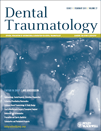Traumatic dental injuries during anaesthesia. Part II: Medico-legal evaluation and liability
Abstract
Abstract – Introduction: Claims for tooth damage following intubation are increasing. An anaesthetic chart (AC) has been proposed to describe patient’s pre-existent dental diseases and any possible lesions caused during intubation and extubation. Materials and methods: We conducted a retrospective study of 235 cases of dental lesions reported in litigation files from January 2000 to June 2009. Based on preoperative oral inspection the anaesthetist decided whether or not to use a protective aid. Two different tooth protectors were applied: (i) a standard mouthguard and (ii) silicone impression putty. Results: The study population consisted of 110 female (age 6–88 years) and 125 male patients (11–90 years) patients. In 66% of cases greater risk of perianesthetic dental injury was reported in the AC due to pre-existing poor dentition. In intubation procedures without protective devices dental subluxation/luxation occurred in 55% of patients, dental avulsion in 43%, exfoliation in 2%, and soft tissue damage in five patients. One patient suffered from transient facial nerve paralysis. The costs of treatments and of impression materials, as well as the total value of compensation for injuries are reported. Discussion: Definition and demonstrability of damages on the AC is important in order to separate the cases worthy of compensation from the non-compensable ones, as to evaluate the possibility of solving the litigation by extrajudicial channels. There are cases in which, based on AC reporting and device adoption the damage resulted to be compensable, but the costs were defined on different estimates of lesions. The use of a protective device makes it possible to down-modulate the damage compensation. Conclusion: The analysis of litigation records and ‘incident reports’ has suggested that the choice of accurate proceeding and the use of protection aids could reduce the number of claims, insurance premiums and the costs of litigation process, thus improving physician-patient relationship.




